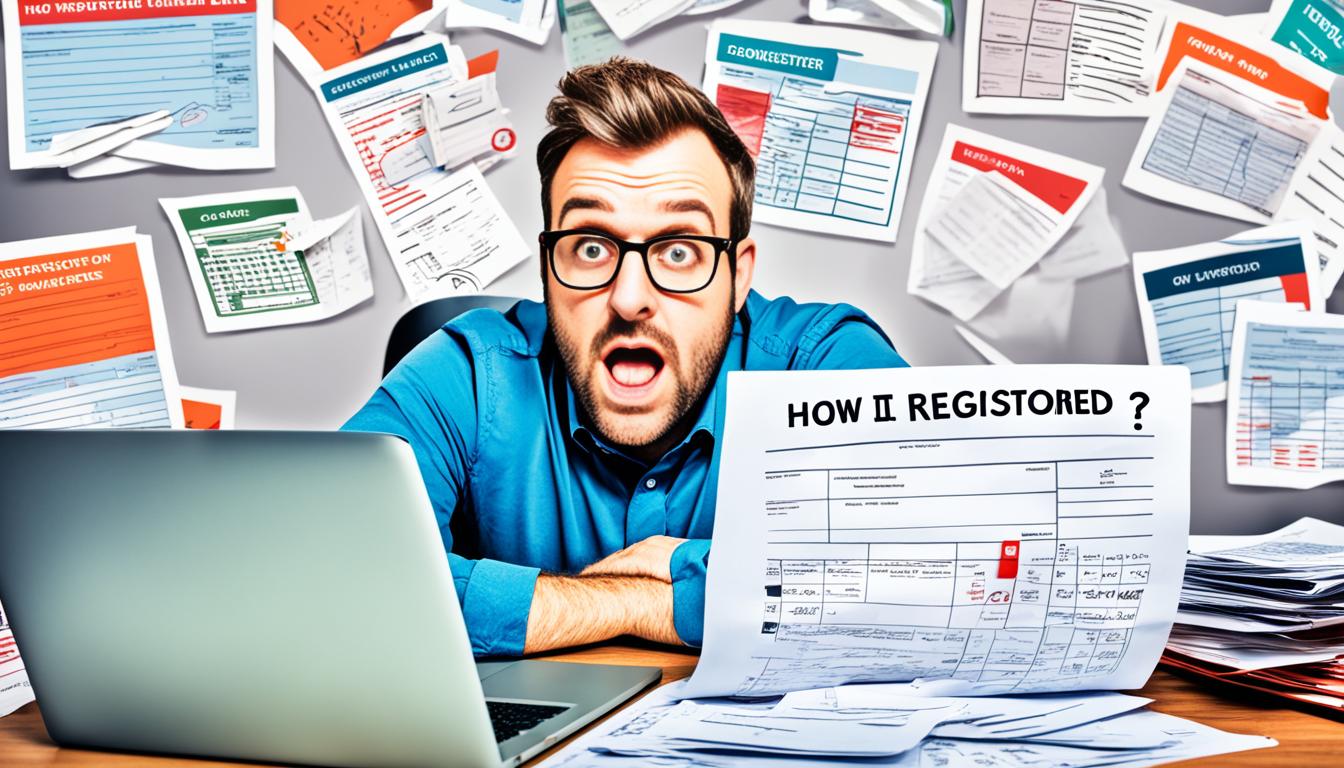If you’re considering working for yourself in the United Kingdom, it’s important to understand the process of registering as self-employed. Whether you’re starting your own business or selling goods and services independently, registering with HM Revenue and Customs (HMRC) is a crucial step towards ensuring legal compliance and avoiding penalties.
In this article, we will provide a comprehensive guide on how to register as self employed, including the different ways to work for yourself and the step-by-step registration process. We will also discuss the importance of registering within the specified deadlines, as well as the consequences of not doing so.
By the end of this article, you’ll have a clear understanding of the necessary steps and requirements for registering as self-employed in the UK, allowing you to confidently start your entrepreneurial journey. Let’s get started!
Are You Self Employed? Find Out Here
Whether you work for an employer during the day or run your own business in the evenings, it’s important to determine your self-employed status. This section will guide you through the process of checking your self-employment status and provide resources for further clarification.
There are instances where individuals can be both employed and self-employed simultaneously. To verify your self-employment status, you have two options:
- Using the Check Employment Status for Tax tool online
- Contacting HM Revenue and Customs (HMRC) by phone
To use the Check Employment Status for Tax tool, simply input your relevant details and answer a series of questions. The tool will provide you with an indication of your self-employed status.
“You can be both employed and self-employed at the same time.”
If you still have doubts or uncertainties about your self-employment status, it’s best to consult HMRC for personalized advice. They can assist you in understanding the criteria for self-employment and guide you through the registration process.
Remember, properly identifying your self-employed status is crucial for taxation purposes and compliance with HMRC regulations. By verifying your self-employment status, you can ensure that you are fulfilling your legal obligations and avoiding any potential issues in the future.

Benefits of Establishing Your Self-Employment Status
Understanding your self-employment status is not only important for compliance but also to take advantage of various benefits. By registering yourself as self-employed with HMRC, you gain:
- Access to tax reliefs and deductions suitable for self-employed individuals
- Eligibility for the Self-Assessment tax return process
- Opportunities to claim certain business expenses
- The ability to build a solid financial foundation for your business
By differentiating your employment status, you can leverage the appropriate resources, plan your finances effectively, and ensure a smooth transition into the realm of self-employment.
Different Ways to Work for Yourself
Aside from being a sole trader, there are other business structures available for those looking to work for themselves. Two common options are becoming a partner in a business partnership or setting up your own limited company. Each structure has its own specific requirements and registration process that you need to be aware of before making a decision.
If you’re considering becoming a partner in a business partnership, you should consult with potential partners and establish a clear agreement regarding the responsibilities, profit-sharing arrangements, and decision-making process within the partnership. Once the partnership agreement is in place, you can proceed with registering your partnership.
On the other hand, if you prefer the option of setting up a limited company, you will need to consider several factors. This includes choosing a suitable company name, appointing at least one director, and determining the share structure and the issuing of shares. Additionally, you will need to meet the legal requirements and complete the necessary registration process with Companies House.
Deciding which structure is right for you can be a complex task, and it’s crucial to make an informed choice that aligns with your business goals and objectives. It’s advisable to seek professional advice from a solicitor or an accountant who specializes in business formation to ensure you understand the implications and obligations associated with each business structure.

How to Register as Self Employed in the UK?
Registering as self-employed in the UK is a straightforward process. Follow these step-by-step instructions to ensure a smooth registration:
- Confirm Your Self-Employment Status: Determine if you meet the criteria for being self-employed. If you run your own business, work for yourself, and have control over your work arrangements, you are likely self-employed.
- Prepare the Required Information: Gather the necessary details for your registration, including your personal information, National Insurance number, and business details.
- Access the HMRC Online Registration: Visit the HMRC website and locate the online registration portal for self-employed individuals.
- Complete the Registration Form: Fill out the self-employed declaration form, providing accurate and detailed information about your business and financial activities.
- Submit the Form: Once you have completed the form, submit it online through the HMRC portal.
- Receive Your Unique Taxpayer Reference (UTR): After submitting the form, you will receive your UTR, a unique reference number that identifies you for tax purposes.
- Enroll for Self-Assessment: Use your UTR to enroll for Self-Assessment, which allows you to file your tax returns and pay any taxes owed.
Completing these steps will ensure that you are registered as self-employed with HMRC and have met all the necessary requirements. Remember to keep accurate records of your income, expenses, and tax obligations to stay compliant as a self-employed individual.

Now that you have successfully registered as self-employed, you can focus on managing your business, fulfilling your tax obligations, and enjoying the benefits of being your own boss.
Registering for Self-Assessment if Not Self-Employed
Even if you’re not self-employed, there are situations where you may still need to register for Self-Assessment. Follow these steps to register:
- Gather the required information: Before you start the registration process, make sure you have the necessary information at hand. This includes your National Insurance number, personal details (such as your full name and address), employment details (e.g., employer’s name and address), and details of any income you receive that is not subject to PAYE.
- Access the HMRC website: Visit the HMRC website and navigate to the official Self-Assessment registration page.
- Create an online account: If you don’t already have an online account with HMRC, you will need to create one. Provide the required details and follow the instructions to set up your account.
- Complete the registration form: Once you have logged into your online account, you will be prompted to complete the Self-Assessment registration form. Fill in all the required fields accurately and truthfully.
- Submit your registration: Review the information you have entered and ensure its accuracy. Once you are satisfied, submit your registration form.
After completing these steps, you will receive a Unique Taxpayer Reference (UTR) from HMRC. This UTR is an important identifier for your tax affairs, so keep it safe and accessible.
If you need assistance or have any questions during the registration process, you can contact HMRC directly for guidance.
| Benefits of Registering for Self-Assessment | Considerations for Registering |
|---|---|
|
|
Deadlines and Consequences of Not Registering
It’s crucial to register as self-employed within the specified deadlines to avoid potential fines and penalties. According to gov.uk, you are required to register for Self-Assessment and Class 2 National Insurance by 5 October in your business’s second tax year. Failure to register on time can have serious consequences.
By registering as self-employed, you fulfill your legal obligations and ensure that you pay the correct amount of tax and National Insurance contributions. It also allows you to claim certain business expenses and benefits that are available to self-employed individuals.
Not registering as self-employed within the specified deadlines can result in:
- Fines and penalties imposed by HM Revenue and Customs (HMRC)
- An investigation into your tax affairs
- The loss of certain tax reliefs and benefits
- Potential legal consequences if deliberate non-compliance is suspected
To avoid any issues or complications, it’s best to complete your registration process as soon as possible. By being proactive and meeting the deadlines, you can ensure compliance and peace of mind in your self-employment journey.
Remember, it’s always wise to consult with HMRC or a qualified professional if you have any doubts or questions regarding your self-employed tax registration.
Conclusion
Registering as self-employed in the UK is a straightforward process that involves determining your self-employment status, creating an online account, providing necessary information, and waiting for your Unique Taxpayer Reference (UTR) and enrollment for Self-Assessment. By registering within the specified deadlines, you can ensure compliance with tax regulations and avoid unnecessary penalties.
If you have any doubts or questions regarding the registration process or your self-employment status, it is highly recommended to seek advice from HMRC or consult a professional. They can provide guidance tailored to your specific circumstances and help ensure a smooth registration process.
Remember, registering as self-employed is an important step in establishing your business and fulfilling your tax obligations. Taking the time to complete the registration accurately and within the given timeframe will provide you with peace of mind and set you on the path to success as a self-employed individual in the UK.




